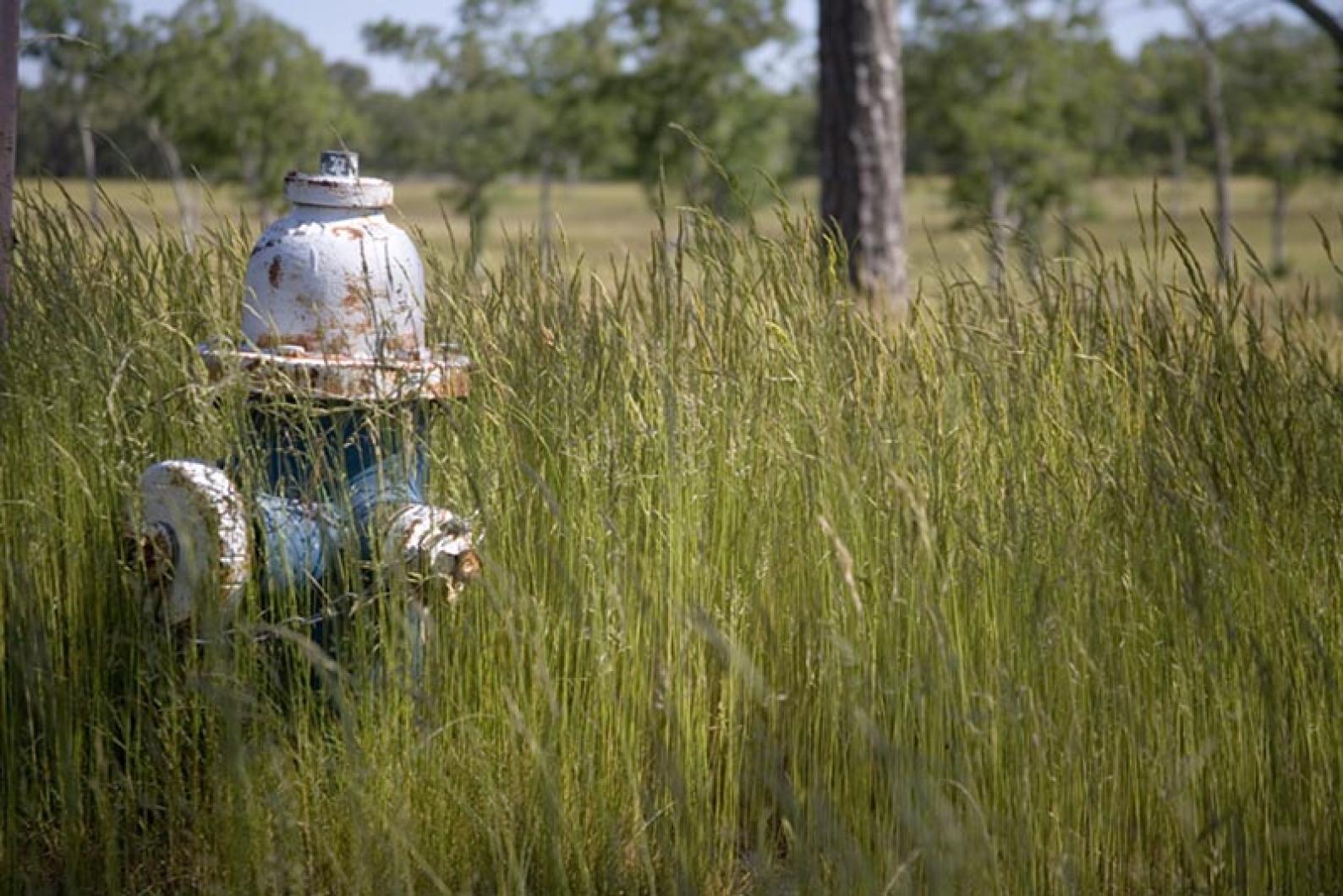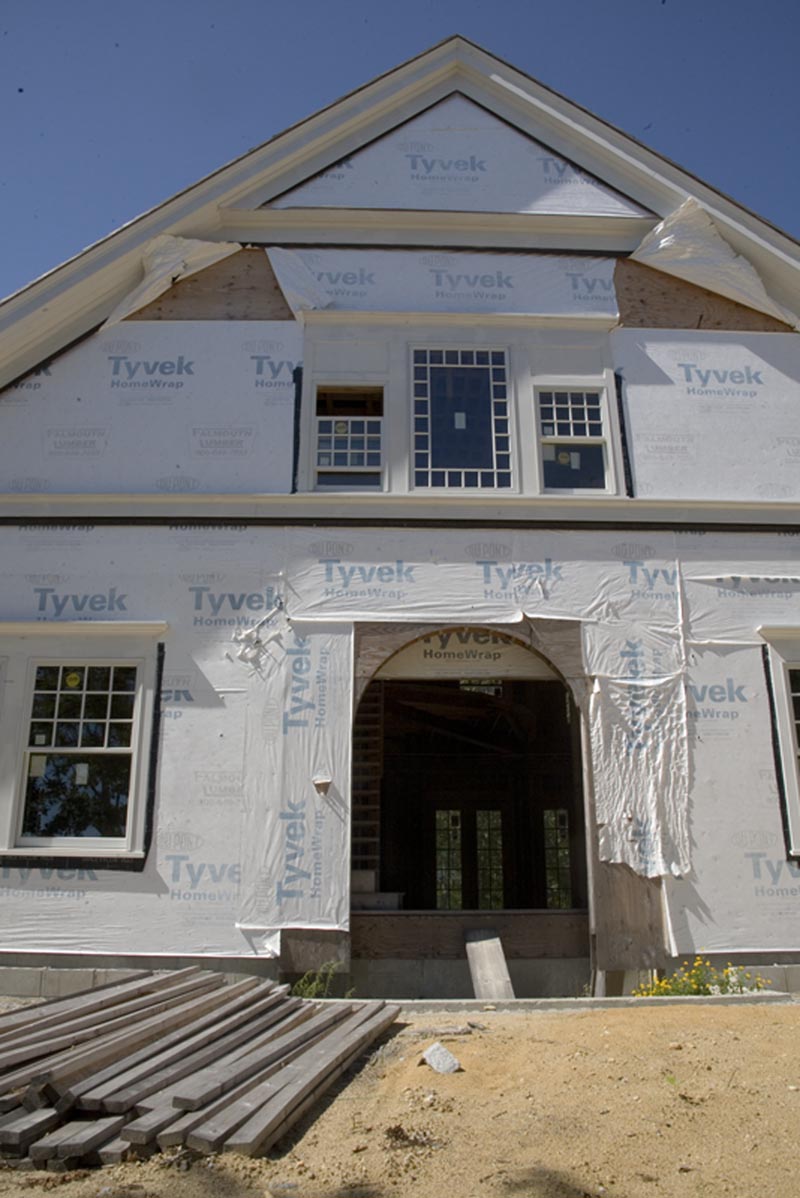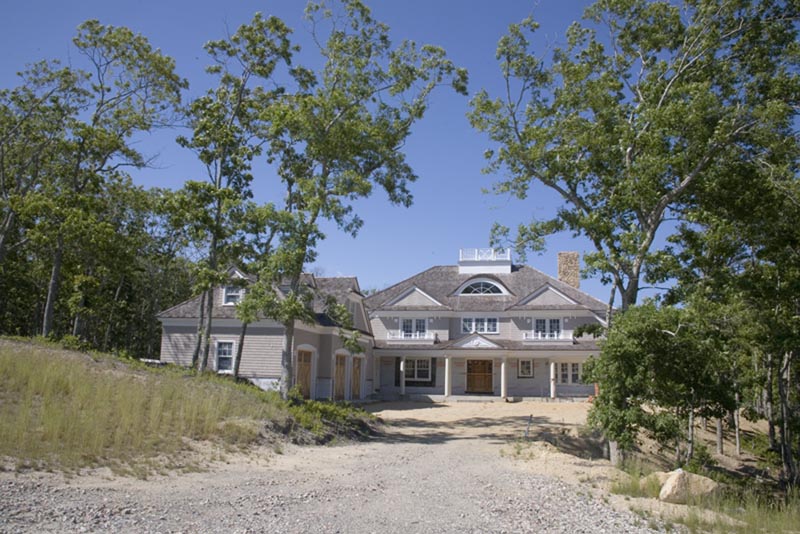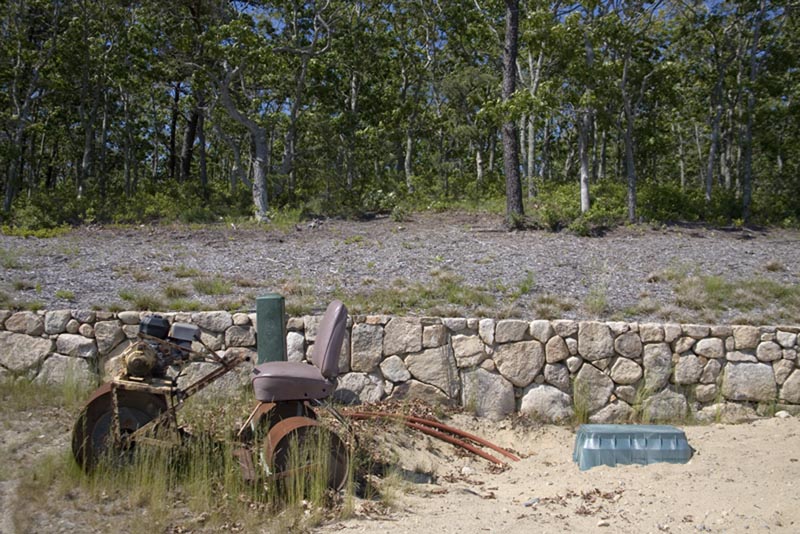It was once a battleground for one of the most heated and divisive fights in the history of Oak Bluffs.
It has been five years since the dust settled over the proposal by Connecticut developer Corey Kupersmith to build a private 18-hole golf course in the Southern Woodlands, the largest tract of undeveloped forest left in town.
After the golf course plan was denied by Martha’s Vineyard Commission for the third and final time in 2003, it was replaced by a compromise: the Martha’s Vineyard Land Bank bought 190 acres of the property, and the remaining 90 acres were planned as an equestrian-themed subdivision meant to attract wealthy homeowners.
But today the Kupersmith subdivision in the Southern Woodlands remains vacant save two model homes and a scattering of derelict construction equipment. The entrance road gate is locked, grass is overgrown and a manmade pond was never filled in. Work on the subdivision came to a halt about two years ago, not long after a Web site was created advertising the subdivision, called South Wood Farms, as an “exclusive, gated community that offers the privacy you want and the lifestyle you have learned.”
Despite the hype of several years ago, there are no horse barns, homes or people to be found at South Wood Farms, and the place looks more like a ghost town than a high-end gated community.
Mark Ellis, one of the contractors hired by Mr. Kupersmith to build homes in the subdivision, said this week he left the project last year due to a lack of information from the developer and overall lack of progress. He said the property was never hooked up to electricity or town water, and he said he simply couldn’t wait any longer.
“Nothing was going on and I had to take other work, it seems the project was stuck on hold and would continue to be stuck on hold for a long time,” he said.
Meanwhile, there is apparently no way for someone to buy a lot in South Wood Farms even if they wanted to. Oak Bluffs realtor Robert Murphy of Towne and Country Real Estate said he has tried to contact Mr. Kupersmith or his representatives on several occasions to try and list one of the properties, but has never actually spoken with anyone. He said several other brokers have had a similar experience.
“I’ve never talked to anyone representing the project, and I’ve tried many times,” Mr. Murphy said.
The properties are not listed in LINK, an Island multiple listing service for real estate. Records in the Dukes County registry of deeds show that two of the lots have been sold; one of the sales was between two companies held by Mr. Kupersmith. The transaction recorded on Jan. 10 was for a lot held by Millennium Par Holding, which is owned by Mr. Kupersmith, to another company he also holds for a price of $233,770.
In October of 2006 Mr. Kupersmith deeded all the land in the planned subdivision from Millennium Par Holding to Farlap Development Corporation, which he also owns, at a cost of $12 million.
Mr. Kupersmith also sold a lot to Frederic Mascolo of Edgartown for just under $200,000 in January of 2007. That transaction was the subject of a transfer hearing before the Martha’s Vineyard Lank Bank commission on June 16 because the property was sold at a price below market value. Minutes of the meeting indicate the town of Oak Bluffs assessed the lot at $309,400, which would have generated a land bank fee of $6,188, but the lot instead sold for just under $200,000 which generated a fee of only $3,977.
The commission accepted the lower sale price on the grounds that the purchase actually took place in 2005 and was not recorded until 2007, and that Mr. Kupersmith determined the sale price by dividing his total price by the number of lots.
Repeated efforts by the Gazette to contact Mr. Kupersmith in recent months have been unsuccessful.
When reached by telephone last November, a representative for the project, Daniel P. McLaughlin, confirmed that the project is on hold for the time being until the housing market improves. Mr. McLaughlin is listed as the contact person on the South Wood Farms Web site; an on-line search revealed that he is the president of the Boston-based Daniel P. McLaughlin & Co. Auctioneers.
Mr. McLaughlin said in November the real estate market did not support the sale of high-end homes that were estimated to sell for between $2 and $4 million. He also said Mr. Kupersmith was reluctant to invest more money in the project until the market rebounded.
“There is nothing really more to say, the market is not very strong right now and I just don’t think there is a market for $3 million dollar homes,” Mr. McLaughlin said at the time. “I think we will be moving ahead when [the market] improves,” he said.
It all adds up to a strange and anticlimactic turn for a project that several years ago literally tore a town down the middle. The Kupersmith plan to build a golf course in the Southern Woodlands was denied three times by the Martha’s Vineyard Commission, but the recorded votes only tell part of the story.
The golf course project pitted neighbor against neighbor and led to accusations of town officials hatching secret deals with developers behind closed doors. The accusations were never proven.
The fight was bitter. At one point Mr. Kupersmith threatened to build a massive 366-unit affordable housing project on the property and he took the commission to court, challenging its right to review affordable housing projects under the state law known as Chapter 40B.
The commission prevailed in the case.
Later one of Mr. Kupersmith’s representatives threatened to clear cut 270 acres of trees, challenging the commission to stop him. The state Natural Heritage Program intervened, issuing a cease and desist order after some of the cutting began.
After the commission denied the golf course a second time, a citizen group campaigned for the town to pull out of the commission. At a special election in May of 2003 that saw a record turnout, the measure failed.
Finally, in March of 2004 after the golf club plans had been denied a third time, the story took an unexpected turn when Mr. Kupersmith sold 190 acres to the land bank for just over $18 million. He kept 90 acres and received approval from the commission to build the 26-lot equestrian-themed residential subdivision.
“Although demand is high, South Wood Farms will be limited to no more then twenty-six custom-built homes . . . access to the project will be strictly controlled through a gated entrance. In addition, we offer a unique concierge service to help you make the most of your days. Need a tee time? Restaurant reservations? Flight to New York or Boston? We are here to assist,” the Web site says.
But the subdivision lies vacant and unfinished.
Town officials contacted this week recalled the era of the golf course wars.
“In a perfect world, that area would remain undeveloped, but that didn’t happen,” selectman Roger Wey said. “I thought the golf course was the wrong move for this town — not only because of the potential effects on the environment, but for other reasons, too. If that project came up today I would still be against it.”
He continued:
“It pitted a lot of people against each other . . . there was this feeling of us versus them everywhere. There was also this use of intimidation I think has no place in government or town planning.”
Kerry Scott, who was elected selectmen after the proposal was defeated a third time, said the project led to many personal and political divides that still exist today.
“That was probably the darkest chapter in this town’s history. The lines were drawn between pro-development and pro-conservation. I think, in a way, people still stick to those sides. I think we have come a long way in five years, but we still have a ways to go,” she said.
Todd Rebello, a former selectman who was an ardent supporter of the golf course, said the acrimony was regrettable. But he said he was pleased with the plan for the luxury homes.
“I don’t think anyone ever expected that issue to get as hot as it did, it kind of took on a life of its own. It seemed like every single person had an opinion on the project, and a strong one at that. But I am glad we’ve moved past that. In the end I think we found a great solution, and I am happy we found a middle ground . . . but for me I still think the golf course idea had merit,” he said.










Comments (4)
Comments
Comment policy »